Green Infrastructure as an Urban Landscape Strategy for the Revaluation of the Ite Wetlands in Tacna
Abstract
1. Introduction
- The green infrastructure project in the Ite Wetlands, Tacna, will apply various strategies inspired by successful solutions at an international level.
- Ecological corridors will be established that connect the wetlands with other nearby green areas, promoting the migration of species and the conservation of biodiversity.
- Artificial wetlands will be implemented that will serve both to restore the ecosystem and to offer recreational and educational spaces to the public.
- Permeable pavements and aquatic vegetation will be used to manage stormwater, reducing the risk of flooding and improving water quality.
- The project contributes to the Sustainable Development Goals (SDGs), in particular SDG 6 (clean water and sanitation) and SDG 15 (life on terrestrial ecosystems), promoting the restoration of wetlands and the conservation of biodiversity.
2. Materials and Methods
2.1. Methodology
2.2. Identification of Topic and Issues
2.2.1. Background Check
2.2.2. Interviews with Experts
2.2.3. Questionnaire
2.3. Determination of Indicators
2.4. Development and Formulation of the Questionnaire
2.4.1. Questionnaire Distribution
2.4.2. Questionnaire Design
- Coverage of green spaces: Opinions on whether the number of parks, gardens, and natural areas is sufficient for local needs.
- Biodiversity: Perception of the conservation status of species and habitats and their sufficiency to satisfy the needs of the community.
- Urban density: Assessment of whether the level of construction and population is adequate and does not negatively affect the quality of life.
- Access to essential services: Opinion on the availability and accessibility of services such as transportation, health, and education.
- Effectiveness of green infrastructure: Opinions on whether green spaces help in water and air quality management.
- Urban design and quality of life: Opinion on the impact of urban design on the quality of life of the community.
- Adaptation to climate change: Perception of the area’s capacity to adapt to extreme climate events.
- Environmental education: Assessment of whether environmental education in the area is adequate to inform residents about local problems.
2.5. Analysis of Questionnaire Results
Qualitative and Quantitative Analysis
3. Results
3.1. Study Area
3.2. Climatological Analysis
3.3. Environmental Analysis
3.4. Accessibility
3.5. Zoning
3.6. Vulnerability
3.7. Master Plan
- Land Rehabilitation: Green infrastructure proposes the rehabilitation and revegetation of areas affected by mining.
- Water Management Systems: Green technologies for water management, such as natural filtration systems and artificial wetlands, will be implemented. These systems can reduce the amount of contaminated water mixing with the tailings by treating the water before it comes into contact with the tailings, thus decreasing contamination.
- Erosion Control: The use of vegetation and green engineering techniques, such as terrace construction and natural barriers, can minimize erosion of tailings deposits.
- Use of Sustainable Building Materials: Incorporating recycled and low-environmental-impact building materials can help to reduce the amount of tailings generated.
3.8. Analysis and Implementation of Indicators in Architectural Design
3.9. Design Strategies
3.9.1. Purifying Plants
3.9.2. Birdlife Viewpoints
3.9.3. Interpretive Trails
3.9.4. Cycle Paths
3.9.5. Solar Panels
- Sustainability: They harness renewable and clean solar power, decreasing reliance on nonrenewable energy sources and aiding in the reduction of climate change impacts [40].
- Energy Efficiency: Solar panels effectively transform solar energy into electricity, enabling the luminaires to function with reduced energy usage [41].
- Low Maintenance: Once installed, solar panels require minimal maintenance, which reduces long-term operational costs.
- Circuit 1 spans 6 km and features the installation of 200 lights equipped with photovoltaic panels.
3.9.6. Botanical Garden
3.9.7. Biodrainage System
3.9.8. Ecomuseum
3.9.9. Responsible Solid Waste Management
- Minimization of waste and efficiency in materials;
- Segregation of solid waste at the source;
- Selective collection of solid waste;
- Waste recovery;
- Final disposition.
4. Discussion
Limitations of the Research
5. Conclusions
Author Contributions
Funding
Data Availability Statement
Conflicts of Interest
References
- RAMSAR. 2015. Available online: https://www.ramsar.org/sites/default/files/documents/library/bn7s.pdf (accessed on 23 January 2024).
- Yupanqui, C. MINAM. 2019. Available online: https://www.minam.gob.pe/wp-content/uploads/2019/03/La-ANA-y-la-conservaci%C3%B3n-de-humedales.pdf (accessed on 1 December 2023).
- Cuzcano, J. OCEANA. Available online: https://peru.oceana.org/blog/areas-naturales-protegidas-herramientas-de-conservacion-de-ecosistemas-y-especies/ (accessed on 23 January 2024).
- Ambiental, S.A. Perú: Conoce los 14 Humedales más Importantes para la Biodiversidad y Supervivencia Humana. AM-BIENTAL, SPDA ACTUALIDAD. February 2022. Available online: https://www.actualidadambiental.pe/14-humedales-mas-importantes-para-la-biodiversidad-y-supervivencia-humana/ (accessed on 11 December 2023).
- Aldana Duran, M.I. Biodiversidad y áreas naturales protegidas en la Evaluación de Impacto Ambiental: Avances y temas pendientes. Rev. Kawsaypacha Soc. Medio Ambiente 2022, 34–55. Available online: https://revistas.pucp.edu.pe/index.php/Kawsaypacha/article/view/24640 (accessed on 27 June 2024). [CrossRef]
- Zumaeta, A. Análisis de las políticas para la conservación de la biodiversidad en el Perú. Estud. Desarro. Soc. 2023, 11, 174–183. Available online: http://scielo.sld.cu/scielo.php?script=sci_arttext&pid=S2308-01322023000300014 (accessed on 27 June 2024).
- Borg Rasmussen, M. Convivencia negociada y gobernanza ambiental en áreas naturales protegidas del Perú. Íconos 2022, 26, 161–183. Available online: https://iconos.flacsoandes.edu.ec/index.php/iconos/article/view/4953 (accessed on 27 June 2024). [CrossRef]
- Paz Salinas, M.F. De áreas naturales protegidas y participación: Convergencias y divergencias en la construcción del interés público. Nueva Antropol. 2008, 21, 51–74. Available online: https://www.scielo.org.mx/scielo.php?pid=S0185-06362008000100004&script=sci_arttext (accessed on 27 June 2024).
- Riemann, H.; Santes-Alvarez, R.V.; Pombo, A. El papel de las áreas naturales protegidas en el desarrollo local: El caso de la península de Baja California. Gest. Polít. Pública 2011, 20, 141–172. Available online: https://www.scielo.org.mx/scielo.php?pid=S1405-10792011000100004&script=sci_abstract&tlng=pt (accessed on 27 June 2024).
- (SERNANP) SNdÁNP. Mapa de Áreas Naturales Protegidas del Perú. 2008. Available online: https://sinia.minam.gob.pe/mapas/mapa-areas-naturales-protegidas-2008 (accessed on 22 August 2024).
- El Peruano. Plataforma digital única del Estado Peruano. 2008. Available online: https://www2.congreso.gob.pe/Sicr/AsesJuridica/JURIDICA.NSF/vf06web/FB10F78B170E0E80052573D20075CFC8/$FILE/20080116.pdf (accessed on 23 January 2024).
- Maquera, A.E. Análisis de la estimación del valor económico del ecosistema de los humedales de la bahía de ite, región tacna. Cienc. Desarro. 2018, 62–68. Available online: https://revistas.unjbg.edu.pe/index.php/cyd/article/view/759 (accessed on 22 August 2024).
- Neira, A.C.; Chambilla Ccosi, A. Historia de la contaminación de la bahía de Ite por la empresa minera Southern Perú. La Vida La Hist. 2019, 70–79. [Google Scholar] [CrossRef]
- Radio Uno. 2018. Available online: https://radiouno.pe/noticias/71120/exigen-southern-no-impedir-pastoreo-ganado-rumiante/ (accessed on 1 January 2024).
- Minas, M. Ministerio de Energías y Minas. 2006. Available online: https://www.minem.gob.pe/minem/archivos/file/dgaam/publicaciones/curso_cierreminas/02_T%C3%A9cnico/03_Calidad%20de%20Aguas/TecCalAG_Presentaci%C3%B3n.pdf (accessed on 1 January 2024).
- Perez, S. Environmental impact of the Southern Peru Copper Corporation Mining Company in Latin America: A historical approach from the Early 20th Century to the present. Rev. Geogr. Am. Cent. 2018, 61, 489–503. [Google Scholar] [CrossRef]
- Andina. Tacna: Bomberos Controlan Incendio Forestal en los Humedales de Ite; Andina: Lima, Peru, 2016. [Google Scholar]
- López, J.A.S.; Benítez, R.G. Infraestructura verde. Conceptualización y análisis normativo de México. Quivera Rev. Estud. Territ. 2022, 24, 105–128. [Google Scholar]
- Higueras-García, E.; Pozo-Menéndez, E.; Moneo-Feduchi, B.; Brock, J. Ordenación territorial desde la infraestructura verde y azul en el Valle de Guatiguará (Colombia) urbe. Rev. Bras. Gestão Urbana 2022, 14, e20210284. Available online: https://www.redalyc.org/journal/1931/193173030034/html/ (accessed on 23 January 2024).
- Jurídico Dpde. Diccionario Panshispánico del Español Jurídico. 2014. Available online: https://dpej.rae.es/lema/infraestructura-verde (accessed on 23 January 2024).
- ArchDaily. 2015. Available online: https://www.archdaily.cl/cl/764388/parque-del-humedal-minghu-turenscape?ad_medium=gallery (accessed on 23 January 2024).
- Quira Medios. El Tiabuyes despues del desaolo ¿Qué ha pasado? Available online: https://www.quira-medios.com/humedal-tibabuyes/ (accessed on 23 January 2024).
- Bartorila, M.Á. ResearchGate. 2020. Available online: https://www.researchgate.net/publication/344202968_Sostenibilidad_y_plusvalia_Proyecto_de_revitalizacion_y_conservacion_para_el_humedal_Laguna_del_Carpintero_y_entorno (accessed on 23 January 2024).
- Archdaily. Parque del Humedal Minghu. 2015. Available online: https://www.archdaily.cl/cl/764388/parque-del-humedal-minghu-turenscape (accessed on 22 August 2024).
- Castillo, N.B. Parque Ecologico Humedal Tibabuyes. 2021. Available online: https://repository.unipiloto.edu.co/handle/20.500.12277/10531 (accessed on 22 August 2024).
- Bartorila, M.Á. Proyecto de Revitalización y Conservación para el Humedal Laguna del Carpintero y Entorno. 2020. Available online: https://www.academia.edu/download/82558413/Sostenibilidad_y_plusvalia_DIGITAL_opt.pdf (accessed on 15 December 2023).
- Vizcarra, J.K.; Hidalgo, N.; Chino, E. Adiciones a la avifauna de los Humedales de Ite, costa sur de Perú. Rev. Peru. Biol. 2009, 16, 221–226. [Google Scholar] [CrossRef]
- Apud, A.; Faggian, R.; Sposito, V.; Martino, D. Suitability Analysis and Planning of Green Infrastructure in Montevideo, Uruguay. Sustainability 2020, 12, 9683. [Google Scholar] [CrossRef]
- Sobrinho, O.M.; Rudke, A.P.; Morais, M.V.B.d.; Martins, L.D. Meteorological Effects of Green Infrastructure on a Developing Medium Latin American City: A Numerical Modeling Assessment. Sustainability 2023, 15, 1429. [Google Scholar] [CrossRef]
- Redondo Bermúdez, M.d.C.; Kanai, J.M.; Astbury, J.; Fabio, V.; Jorgensen, A. Green Fences for Buenos Aires: Implementing Green Infrastructure for (More than) Air Quality. Sustainability 2022, 14, 4129. [Google Scholar] [CrossRef]
- Dorado-Rubín, M.J.; Guerrero-Mayo, M.J.; Navarro-Yáñez, C.J. Integrality in the Design of Urban Development Plans. Analysis of the Initiatives Promoted by the EU in Spain. Land 2021, 10, 1047. [Google Scholar] [CrossRef]
- Álvez, A.; Espinosa, P.; Castillo, R.; Iglesias, K.; Bañales-Seguel, C. An Urgent Dialogue between Urban Design and Regulatory Framework for Urban Rivers: The Case of the Andalién River in Chile. Water 2022, 14, 3444. [Google Scholar] [CrossRef]
- Ramirez Lopez, L.J.; Grijalba Castro, A.I. Sustainability and Resilience in Smart City Planning: A Review. Sustainability 2021, 13, 181. [Google Scholar] [CrossRef]
- Balsas, C.J.L. Urban Revitalization in Small Cities across the Atlantic Ocean. Sustainability 2024, 16, 639. [Google Scholar] [CrossRef]
- Vida, J.; Radicchi, A.; Xiao, J. Urban Design for Sustainable Built Environments. Sustainability 2023, 15, 15493. [Google Scholar] [CrossRef]
- Baltazar, O. Sendero interpretativo de orquídeas y bromelias en Tepexilotla, Chocamán, Veracruz. Rev. Mex. Cienc. Agrícolas 2014, 5, 1687–1699. [Google Scholar] [CrossRef][Green Version]
- Esenarro, D.; Chicche, P.V.; Chichipe, V.A.; Cobeñas, P.; Raymundo, V. Bioclimatic Criteria for a Guest House in the District of Canta—Lima. In Proceedings of the 2022 11th International Conference on Power Science and Engineering (ICPSE), Eskisehir, Turkey, 23–25 September 2022; pp. 1–9. [Google Scholar] [CrossRef]
- Esenarro, D.; Malpartida, K.; Silvana, L.; Raymundo, V.; Morales, W. Use of Renewable Energies Applied in Design Strategies for User Comfort in a House in Iquitos-Belen. In Proceedings of the 2022 11th International Conference on Power Science and Engineering (ICPSE), Eskisehir, Turkey, 23–25 September 2022; pp. 135–141. [Google Scholar] [CrossRef]
- Cabezas, M.; Franco, J.; Fasoli, H. Diseño y evaluación de un panel solar fotovoltaico y térmico para poblaciones dis-persas en regiones de gran amplitud térmica. Ing. Investig. Tecnol. 2018, 19, 209–221. [Google Scholar] [CrossRef]
- Herman, F.; Martinez, A.; Guzman, V.; Gimenez, M. Obtención de la máxima potencia en paneles fotovoltaicos me-diante control directo: Corriente a modulación por ancho de pulsos. Univ. Cienc. Tecnol. 2006, 10, 134–138. Available online: http://ve.scielo.org/scielo.php?script=sci_arttext&pid=S1316-48212006000300009&lng=es&nrm=iso (accessed on 8 December 2023).
- Novoa, J.E.; Alfaro, M.; Alfaro, I.; Guerra, R. Determinación de la eficiencia de un mini panel solar fotovoltaico: Una experiencia de laboratorio en energías renovables. Educ. Química 2020, 31, 22–37. [Google Scholar] [CrossRef]
- Gómez, A.; Esenarro, D.; Martinez, P.; Vilchez, S.; Raymundo, V. Thermal Calculation for the Implementation of Green Walls as Thermal Insulators on the East and West Facades in the Adjacent Areas of the School of Biological Sciences, Ricardo Palma University (URP) at Lima, Peru 2023. Buildings 2023, 13, 2301. [Google Scholar] [CrossRef]
- Esenarro, D.; Rodriguez, C.; Arteaga, J.; Garcia, G.; Flores, F. Sustainable Use of Natural Resources to Improve the Quality of Life in the Alto Palcazu Population Center, Iscozazin-Peru. Int. J. Environ. Sci. Dev. 2021, 12, 146–150. [Google Scholar] [CrossRef]
- Raymundo, V.; Mansilla, S.; Esenarro, D.; Vargas, C.; Huerta, E.; Fernandez, D.; Martinez, P. Self-Sustainable Modular Design in Rural Housing and Experiential Tourism in El Callejón de Conchucos. Ancash. Urban Sci. 2024, 8, 138. [Google Scholar] [CrossRef]
- Pavas, J.D. Biodrenaje una Revisión; Informe; Universidad Nacional de Colombia: Bogotá, Colombia, 2019. [Google Scholar]
- Ruiz-Apilánez, B.; Ormaetxea, E.; Aguado-Moralejo, I. Urban Green Infrastructure Accessibility: Investigating Environmental Justice in a European and Global Green Capital. Land 2023, 12, 1534. [Google Scholar] [CrossRef]
- García, A.M.; Santé, I.; Loureiro, X.; Miranda, D. Spatial Planning of Green Infrastructure for Mitigation and Adaptation to Climate Change at a Regional Scale. Sustainability 2020, 12, 10525. [Google Scholar] [CrossRef]
- De Almeida, J.R.; Nunes, R.d.O.; Dias, T. People Prefer Greener Corridors: Evidence from Linking the Patterns of Tree and Shrub Diversity and Users’ Preferences in Lisbon’s Green Corridors. Sustainability 2021, 13, 13228. [Google Scholar] [CrossRef]
- de Almeida, J.R.; Alves, G.B.M.; Nunes, R.d.O.; Dias, T. Despite Being Distinguished as the 2020 European Green Capital, Lisbon Has Lost Public Green Areas over the Previous Decade. Sustainability 2022, 14, 12112. [Google Scholar] [CrossRef]
- Caparrós-Martínez, J.L.; Milán-García, J.; Rueda-López, N.; de Pablo-Valenciano, J. Green Infrastructure and Water: An Analysis of Global Research. Water 2020, 12, 1760. [Google Scholar] [CrossRef]
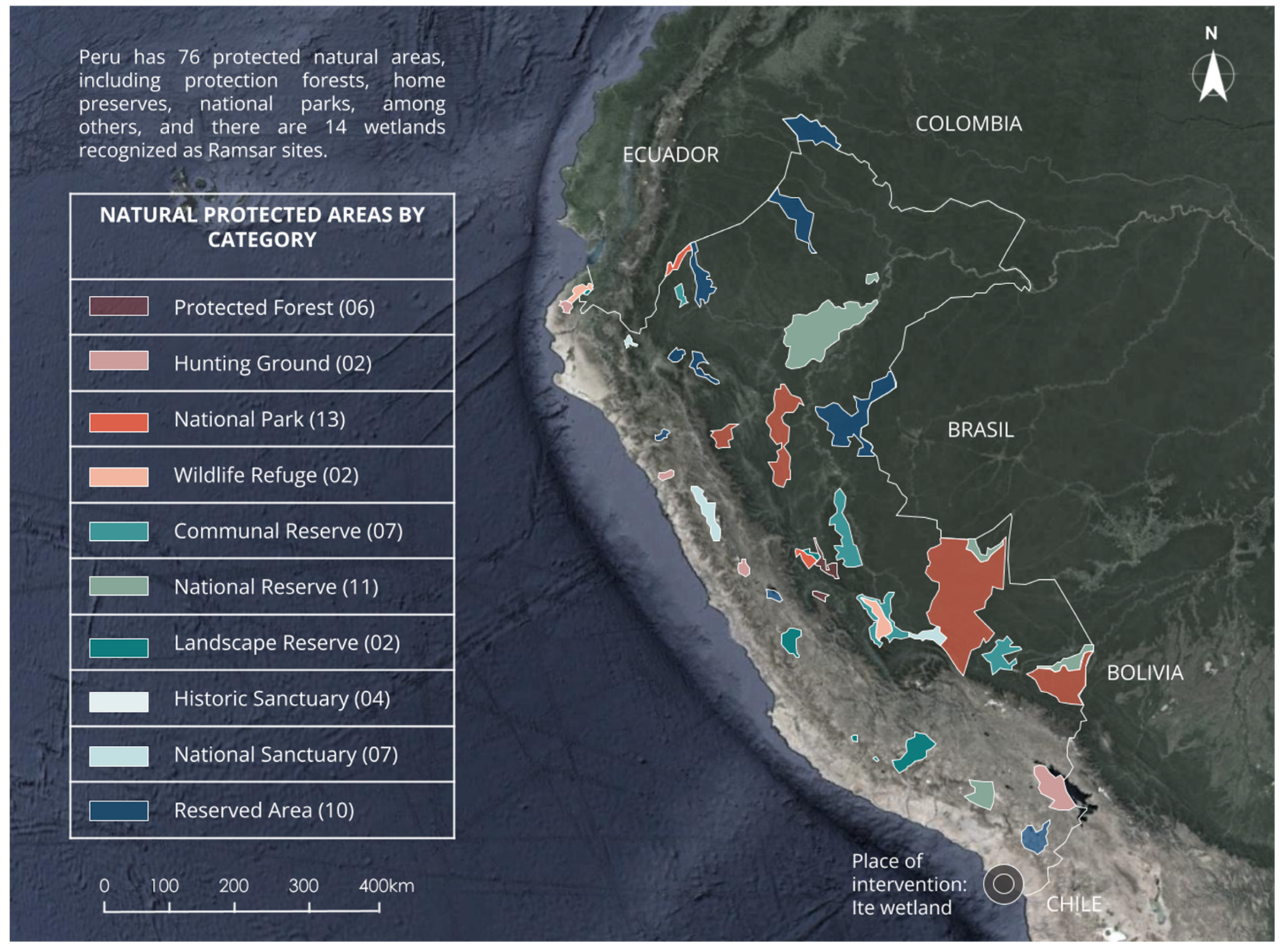

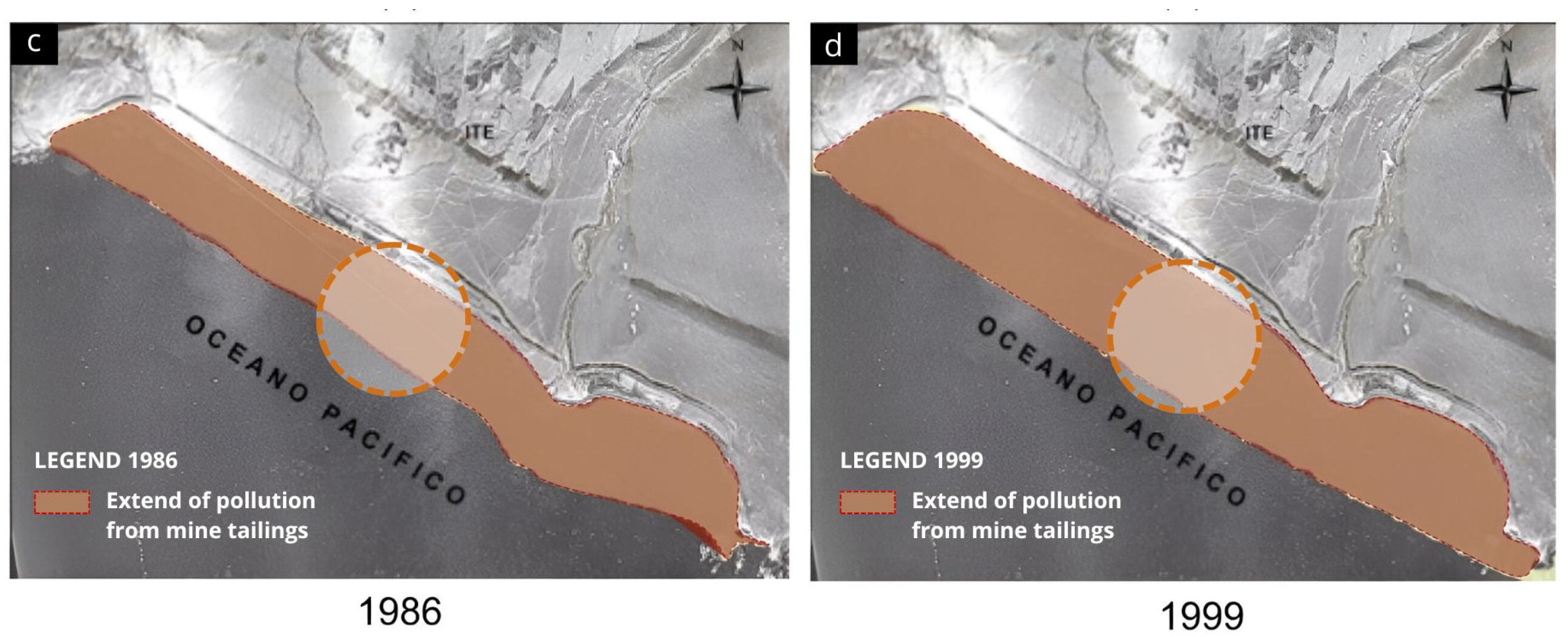

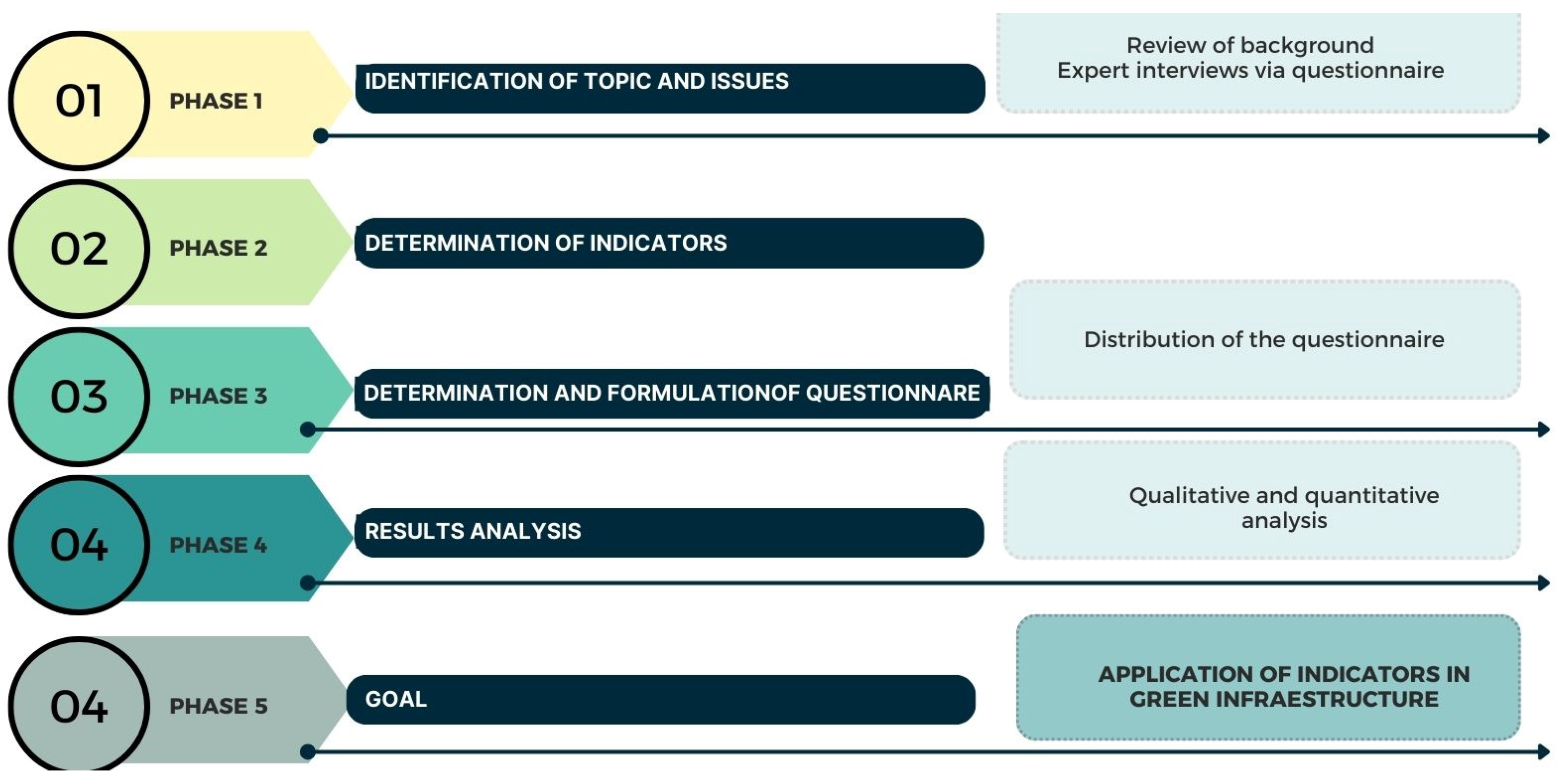



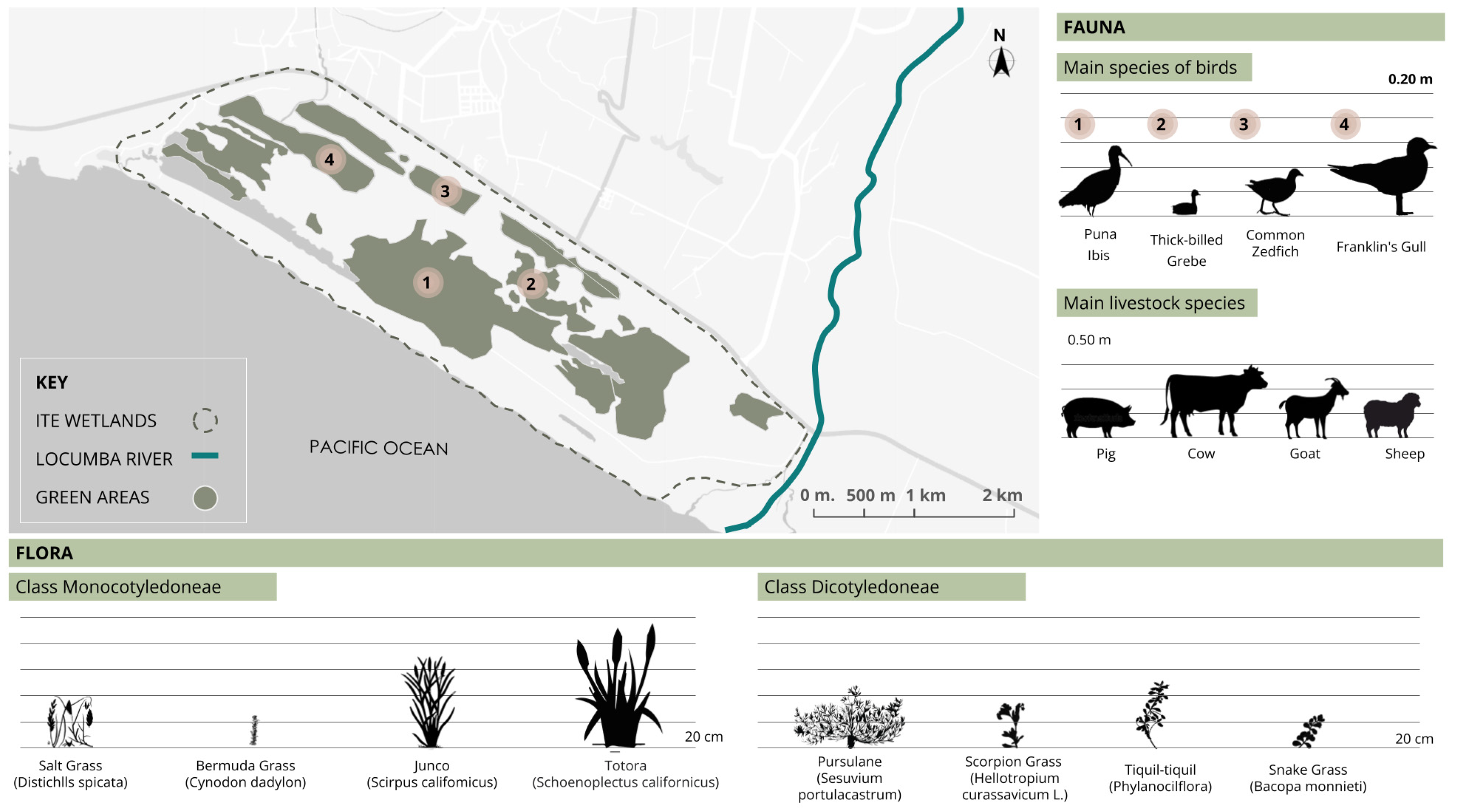
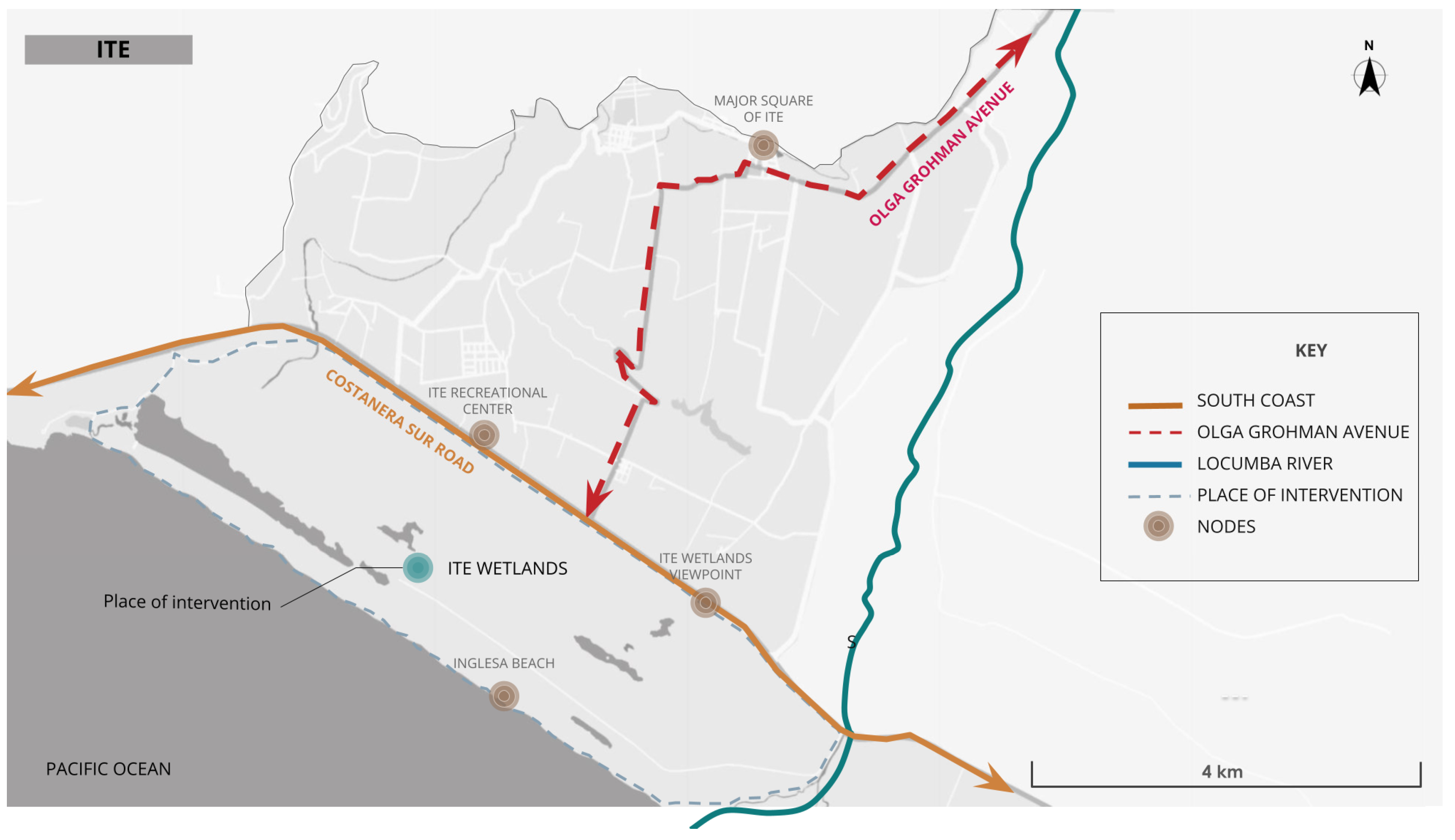
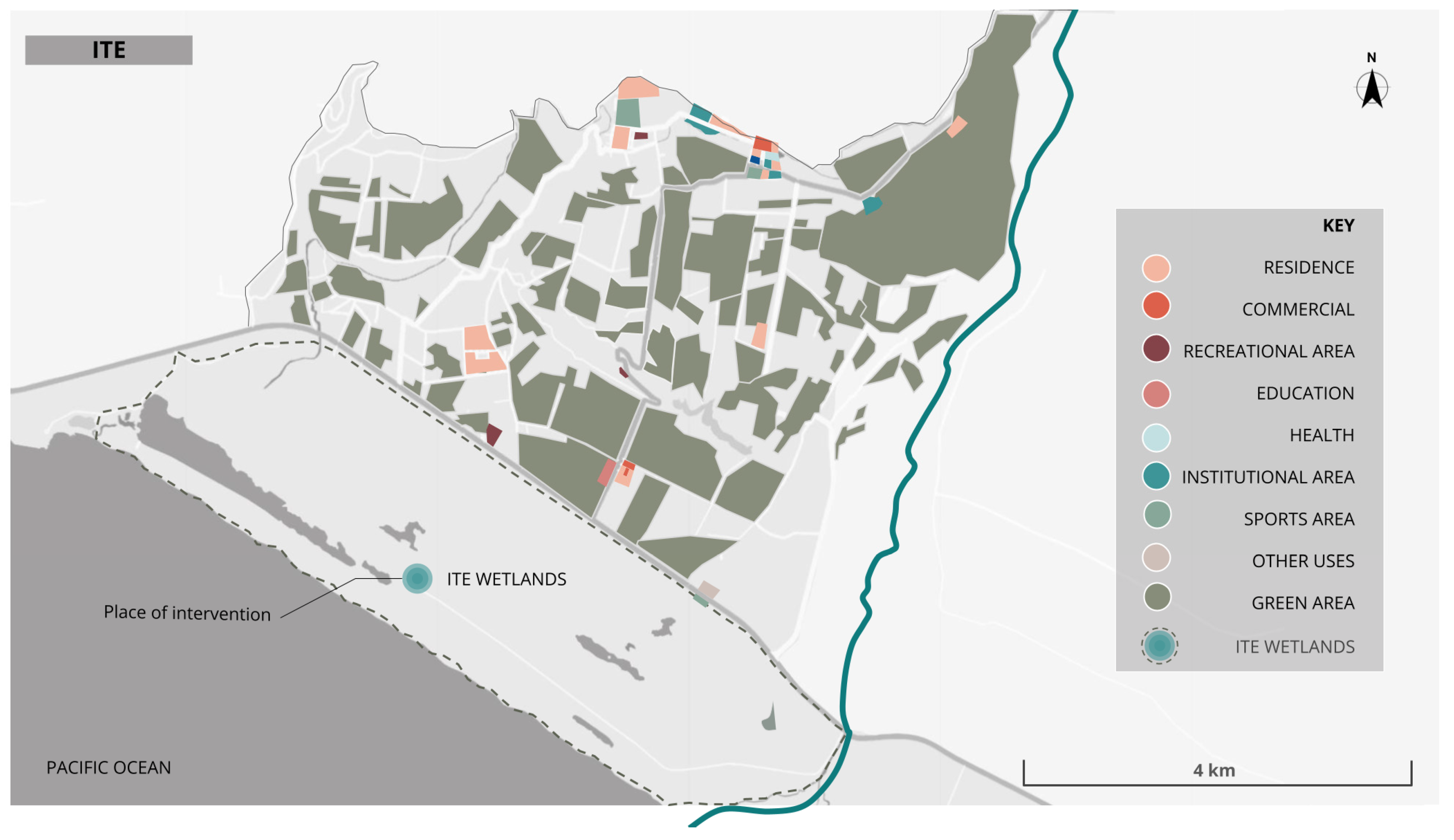
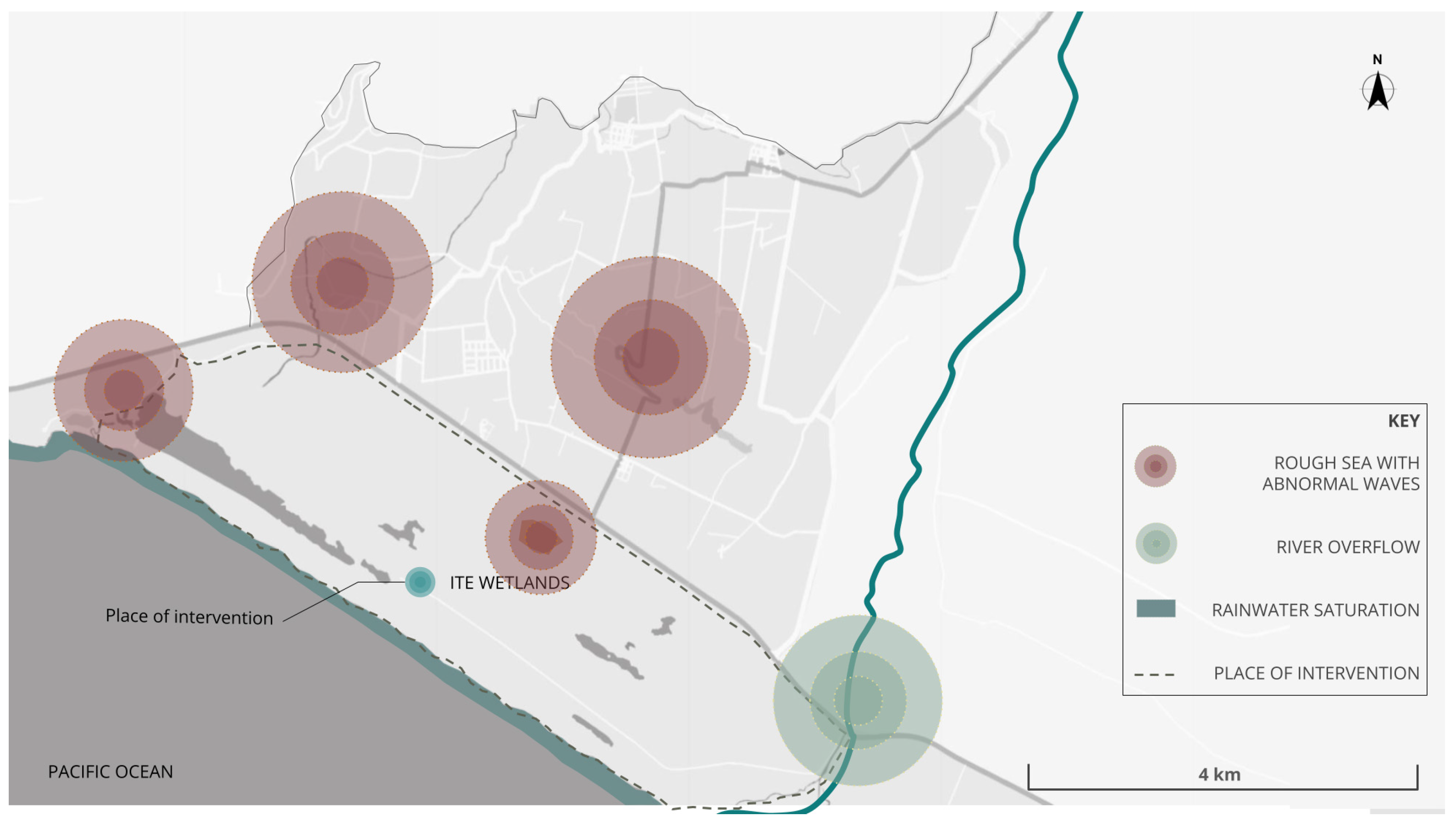

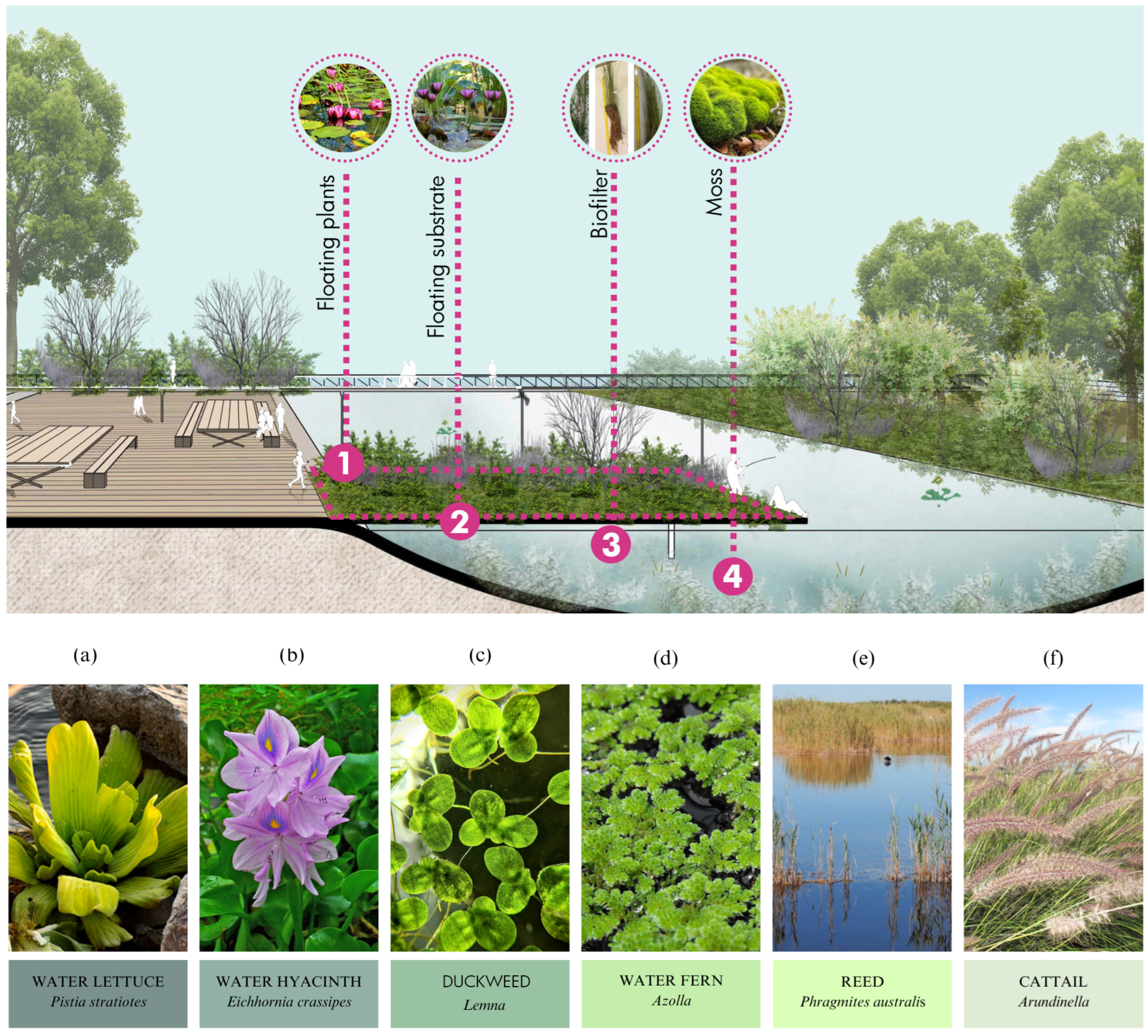
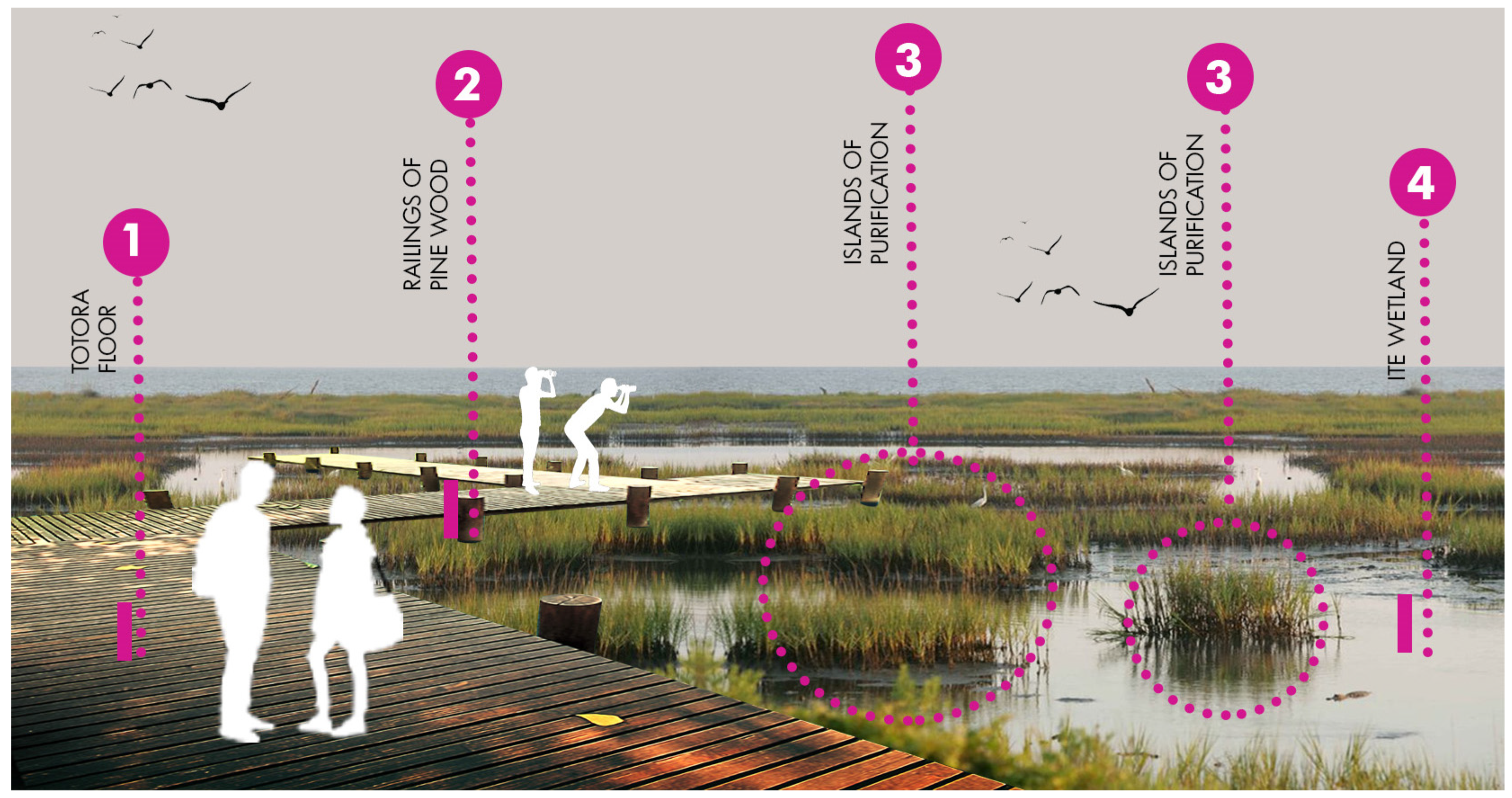
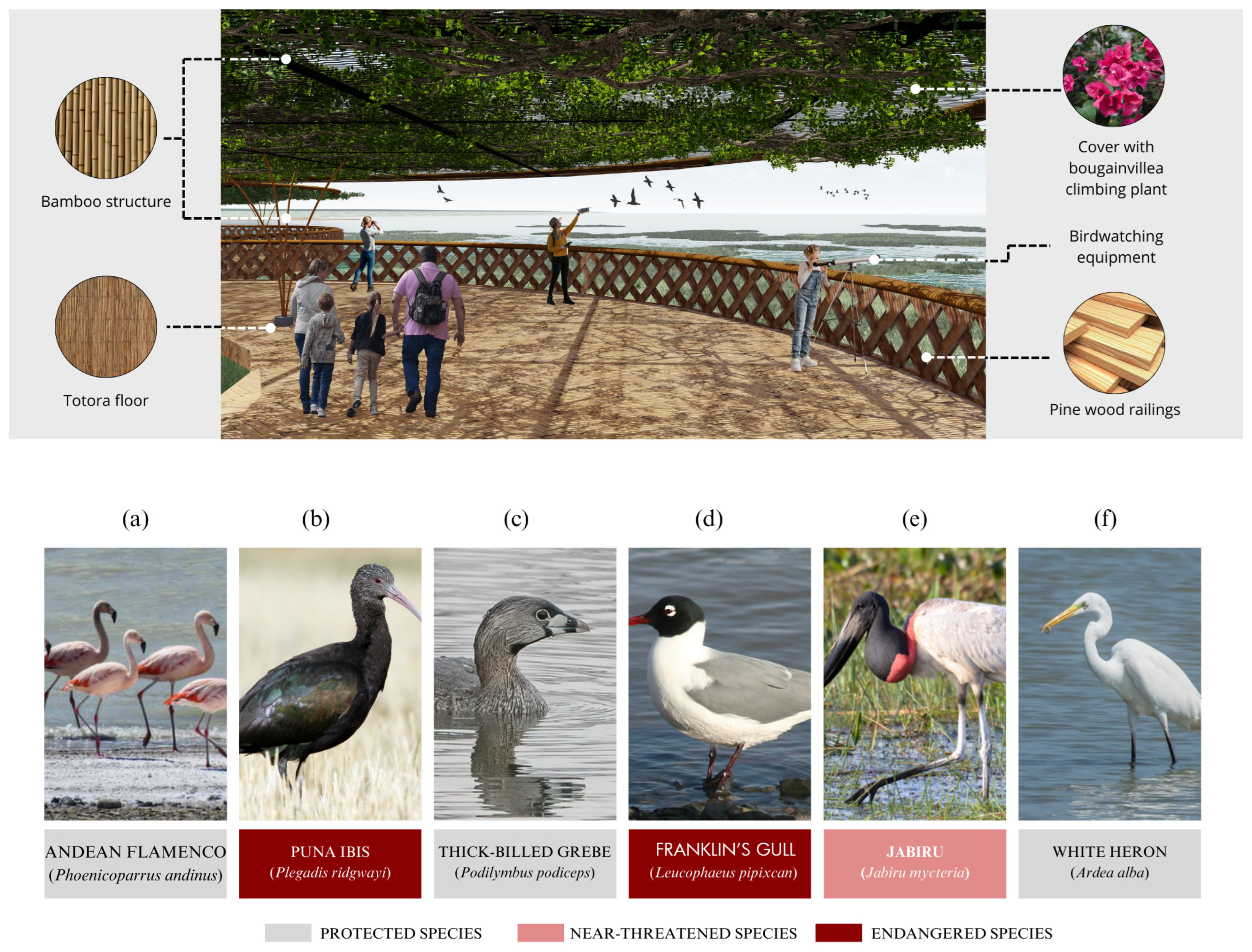
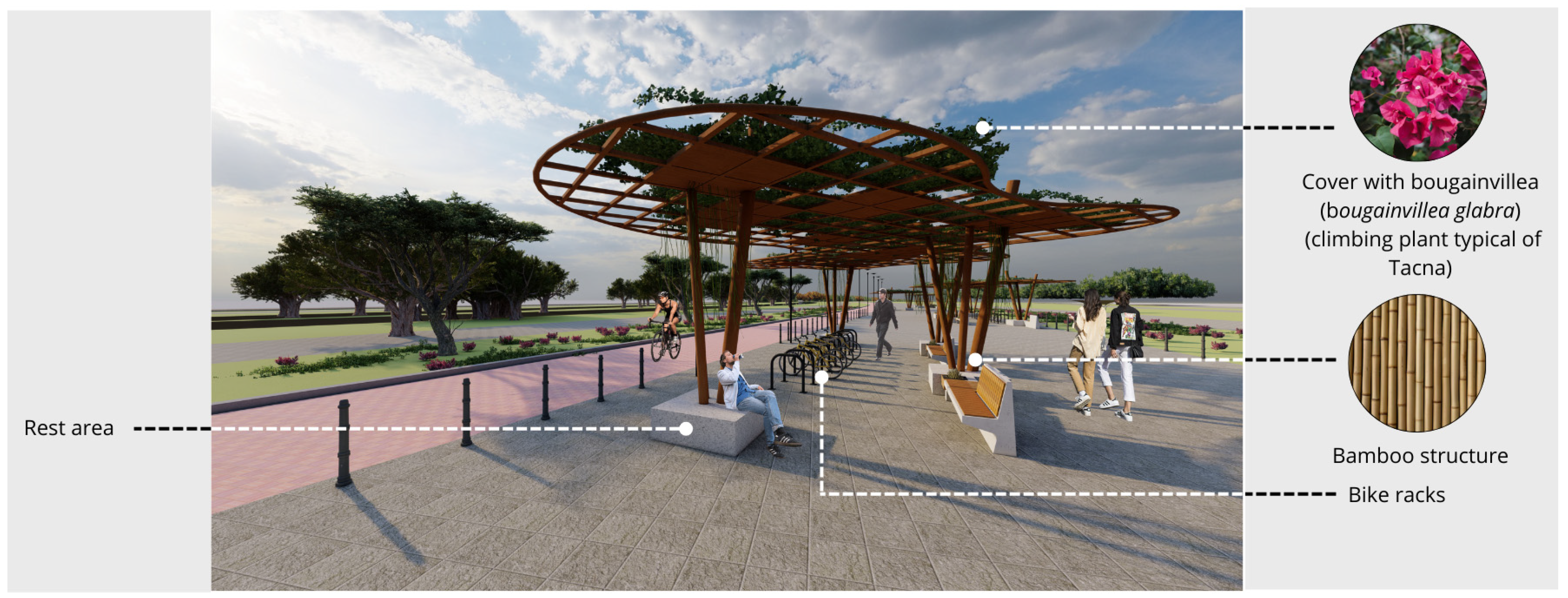

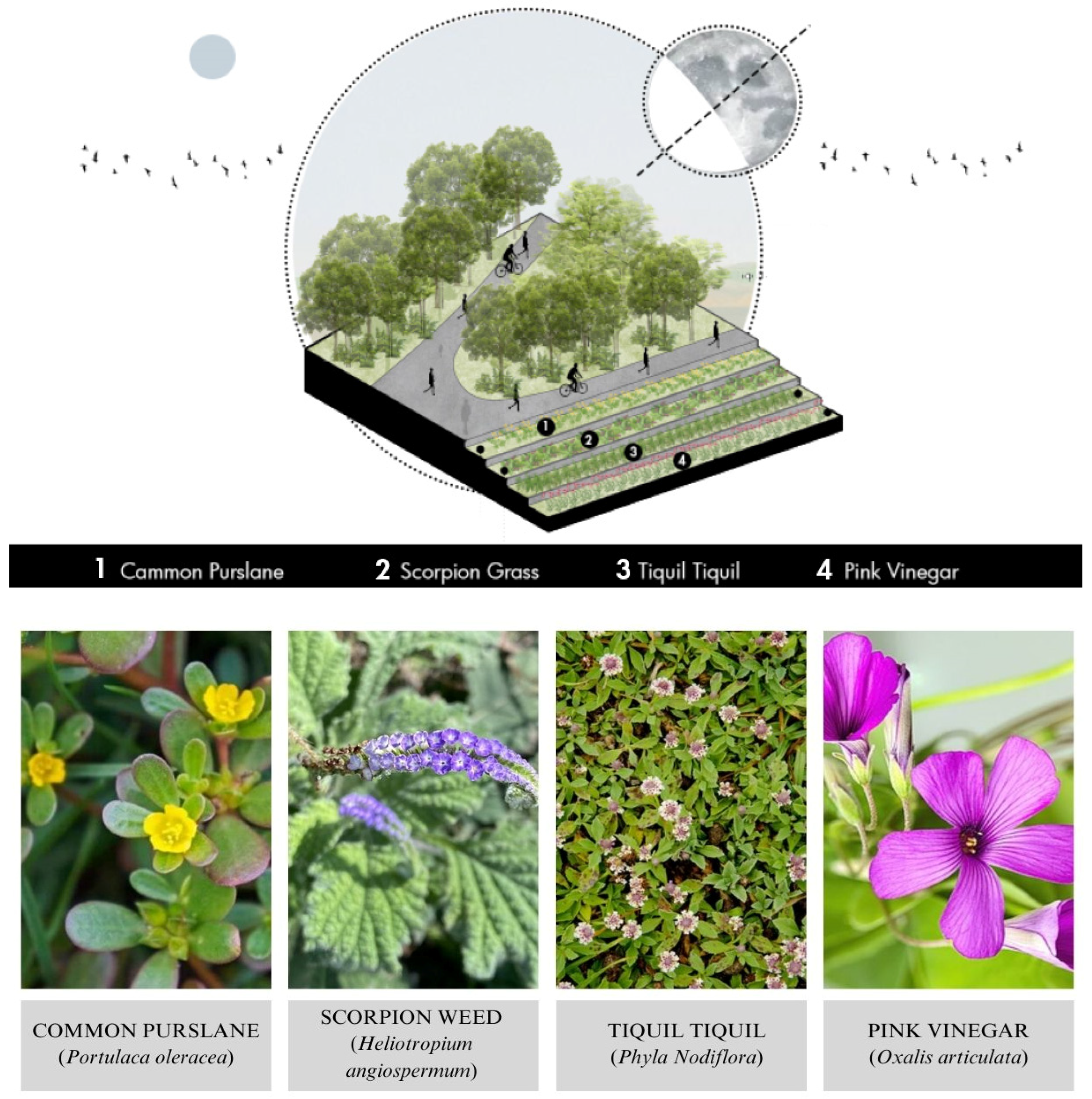


| C1: What urban landscape strategies do you recommend for the revaluation of a wetland, and how can these strategies balance ecological conservation with the needs of sustainable urban development? | |
|---|---|
| Experts | Ecology specialists highlighted the importance of approaches that prioritize the conservation of natural ecosystems through the creation of vegetative buffer zones and the use of native plants that help filter pollution and maintain biodiversity. Urban planners suggested integrating green infrastructure, such as pedestrian paths and bicycle paths, that allow public access in a controlled manner, facilitating environmental education without compromising the natural environment. Architects pointed out that designing recreational and educational spaces around the wetland can foster greater public appreciation and offer sustainable recreational alternatives, thus contributing to the balance between ecological conservation and urban development. |
| C2: What key steps should be followed for the revaluation and conservation of an urban wetland, and how can these actions be integrated into the urban development plan to maximize both environmental and community benefits? | |
| Experts | Regarding the key steps for the revaluation of wetlands, ecologists recommended restoring and connecting ecological corridors to improve biodiversity and strengthen surrounding ecosystems. Urban planners emphasized the need to integrate these projects into urban plans, suggesting the implementation of regulations that protect the wetland against future urban expansion and unsustainable activities. Architects proposed a participatory approach that involves the community from the beginning through education programs and collaboration in planning to ensure that conservation actions also reflect social needs, which would maximize the positive impact on both the community and the community. as in the environment. |
| C3: What are the principles of urban morphology design that can facilitate the revaluation and conservation of ecosystems such as wetlands, and how can these natural areas be integrated into the urban fabric to maximize their ecological and social benefits? | |
| Experts | From the design of urban morphology, ecologists highlighted the conservation of natural landscapes and the need to respect the natural dynamics of the wetland, such as flood cycles and the regeneration of flora and fauna. Urban planners proposed the creation of continuous green areas and the incorporation of vegetation as a structural element of the urban space, which would facilitate the integration of wetlands into the urban fabric. Architects suggested incorporating biophilic and sustainable design principles, which would allow the wetland to be visually and functionally connected with the urban environment, thus maximizing social benefits by creating spaces that improve well-being and interaction between residents and nature. |
| C1: Why is the revaluation of ecosystems such as wetlands crucial in the context of sustainable urban development, and what ecological, social, and economic benefits can be derived from their conservation and integration into the urban fabric? | |
|---|---|
| Experts | Specialists in ecology, urban planning and architecture agreed that the revaluation of urban wetlands is essential because of their multiple benefits. Ecologically, wetlands act as natural climate regulators by capturing carbon and filtering water, reducing flood risks and protecting biodiversity. From a social approach, some experts highlighted that these ecosystems provide recreational and educational spaces that promote a greater connection of people with nature and an improvement in the quality of life. In economic terms, wetlands integrated into urban development offer cost-effective solutions for water management and flood control, reducing gray infrastructure costs and promoting a sustainable city model. Overall, the revaluation and integration of wetlands into the urban fabric balances environmental and social well-being with economic benefits, aligning with sustainable development objectives. |
| C2: What are the main components and strategies of an urban design planned around sustainability, and how can they be effectively implemented to balance urban development with environmental conservation? | |
| Experts | From different perspectives, specialists highlighted key components such as green infrastructure, ecological corridors, and sustainable public spaces. Architects and urban planners highlighted the importance of ecological corridors that allow the connectivity of wetlands with other natural areas, facilitating the movement of species and preserving biodiversity in urban environments. In addition, they considered the implementation of sustainable materials and renewable energy technologies to be essential to reduce environmental impact. Ecologists and urban planners proposed the inclusion of buffer zones with native vegetation, which not only contribute to conservation but increase the aesthetic appeal of the city. To implement these strategies, they recommendd integrated planning, local policies that promote green construction, and educational programs that raise community awareness about the importance of green spaces. |
| C3: What are the main strategies for designing and planning an urban environment that can adapt to and recover from extreme weather events and natural disasters, and how can these strategies be integrated into urban development to maximize community resilience? | |
| Experts | To create cities adapted to extreme climate events, specialists suggested design approaches that integrate both green and gray infrastructure. Architects and urban planners advocated the use of sustainable drainage systems and water retention spaces in high-risk areas, which can mitigate flooding and manage water efficiently. Ecologists emphasized the need to protect wetlands as natural barriers against storms and their effects, while some urban planners proposed incorporating buffer zones and evacuation areas around these ecosystems. To maximize resilience, they highlighted the importance of flexible urban regulations that allow rapid adaptation to new climatic conditions and the development of environmental education programs that prepare local communities to face natural disasters. |
| List of Specialists with Whom Interviews Were Conducted | |
|---|---|
| Manuel Emilio Zavala Barreda | Architect specialized in sustainable design and construction, with a focus on creating innovative spaces in harmony with the natural environment, applying the “ecosophy of architectural landscaping”. He has led notable projects such as the “Plaza del Sol, Beach, Health and Wellness Resort”, which has been recognized for its sustainability, and has worked on social housing awarded by the Ministry of Housing of Peru. In addition, he advises public and private entities on sustainable practices and has been a speaker at international universities. His work has been recognized by the College of Architects of Peru and the United Nations for his contribution to ecofriendly housing. |
| Gerardo Manuel Ángel Vento Figueroa | Architect with a solid academic background and experience in urban projects, with a Master’s in architecture and a doctorate in environment and sustainable development. With a comprehensive approach, he combines his knowledge in architectural design with sustainable strategies for urban development. He has led and participated in various urban planning and regeneration projects, prioritizing solutions that balance the growth of cities with environmental preservation and social well-being. His trajectory is characterized by the application of sustainable principles and commitment to improving the quality of life in urban environments. |
| Lorena del Rocio Castañeda Rodríguez | Architect specialized in sustainability, with training in project management, sustainable urban planning, and environmental design. He has led sustainable housing projects, standing out for his innovative and environmentally responsible approach, as demonstrated by his honorable mention in the National Social Housing Prototype Competition. He is dedicated to promoting sustainable practices in architectural design and urban planning. Currently, he is pursuing doctoral studies and is a member of the ASCE Architectural Engineering Institute. |
| Walter Morales Llanos | Architect who graduated from the Federico Villarreal National University with a Master’s degree in architecture with a mention in business management. Interested in the design of minimalistic housing, the development of friendly and sustainable cities, and the promotion of healthy environments, with a focus on implementing innovative and efficient solutions that adequately respond to specific problems and integrating strategies that promote the quality of urban life, environmental sustainability, and collective well-being. |
| Jesús Abel Peña Chávez | Architect and sculptor with a sustainable approach. A graduate in architecture with a qualification of excellence from the FAU-URP (1997) and a disciple of the teacher Carlos Galarza. Noted for his academic and professional work, he is a specialist in light structures, biomimetics, and advanced design, areas that promote efficient and sustainable architectural solutions. Director of the seventh Latin American Symposium on Technostructures (2018) and member of the scientific committee of the Latin American Network of Tensile Structures, he has led projects such as the “Teatina Quincha Shelter”, presented at the National Museum of Beijing and published in Harvard Design Magazine (2011). He has obtained international recognition in competitions and conferences such as IASS and SLTE, with five first places, and completed a Master’s degree in higher education with a mention in research (2021). He currently directs the “Carlos Galarza” Sculpture and Ceramics Workshop, where he integrates sustainability into artistic research, and advises the Institute of Ethnoarchitecture. |
| Rosemary Bedoya Gomez | Project manager with experience in the health sector and hospital architecture, specialized in the planning, coordination, and execution of sustainable infrastructure projects in the field of EsSalud and the Ministry of Health of Peru. Currently, her works as investment coordinator of the Program for the Creation of Integrated Health Networks (PCRIS). Previously, she was an architect in the Submanagement of Definitive Studies at EsSalud, where she led hospital architecture and investment management projects. Her training includes a Master’s Degree in Modern Construction Management from the Universidad Nacional Federico Villarreal. Her focus is on the implementation of sustainable and efficient solutions in the construction and management of hospital projects, promoting a positive impact on public health and the environment. |
| Karla Castillo Trejo | Architect with a Master’s degree in architecture and sustainability, specialized in sustainable urban planning, with extensive experience in the formulation of urban development plans and execution of works with a sustainable approach. Her career combines deep knowledge in urban planning with innovative design and construction practices, promoting solutions that harmonize urban growth with environmental conservation and social well-being. |
| Rodolfo Alejandro Palacios Ucharico | Architect with an outstanding professional and academic career, with a Master’s degree and a second specialty in sustainable urbanism. His experience covers the design, planning, and execution of works, with a focus on urban projects that integrate principles of sustainability and efficiency. He has led initiatives that prioritize development balanced among infrastructure, urban environment, and environmental care, contributing to improving the quality of life in cities. His comprehensive vision and ability to manage works position him as a professional committed to the sustainable transformation of the built environment. |
| Abraham Barros Cruz | Architect and infrastructure consultant for the licensing of the public and private institutes DISERTPA, DIGESUTPA, PMESUT, and DRELM at the Ministry of Education (MINEDU). He has a Master’s in architecture and sustainability and experience in the management and evaluation of real estate and urban projects, always with a focus on sustainability and responsible development. He has a solid ability to lead and coordinate multidisciplinary teams, supported by his experience in technical areas. His knowledge in public management and contracting with the state is aimed at implementing efficient and sustainable solutions, promoting practices that respect the environment and promote social and environmental well-being in each project. |
| Ethel Yuvidsa Castillo Palacios | Her leads projects at the Ministry of Foreign Affairs of Peru, where she applies her knowledge in 3D Studio Max and AutoCAD to develop innovative and sustainable designs. Previously, at EXPODECO, she strengthened her expertise in the development of real estate projects with a comprehensive sustainability approach. Her professional approach focuses on promoting architecture that respects and enhances the natural environment, prioritizing energy efficiency, responsible use of resources, and long-term functionality. |
| Kenti Cusi Coillor Valderrama Orbegoso | Consultant on environmental issues with experience in strategic planning, inspection and environmental management at the national level, highlighting her work in the Ministry of the Environment (MINAM) and the Environmental Assessment and Control Agency (OEFA). Expert in the formulation and updating of environmental planning instruments, interinstitutional coordination, and design of regulatory and administrative processes. Her led the general coordination of eight deconcentrated offices of the OEFA, strengthening environmental oversight in regions. She has developed strategic proposals to improve joint performance between MINAM and its affiliated organizations, optimizing the implementation of sustainable public policies. |
| Pedro Manuel Amaya Pingo | Consultant on environmental issues with experience in strategic planning, inspection, and environmental management at the national level, with highlights including his work in the Ministry of the Environment (MINAM) and the Environmental Assessment and Control Agency (OEFA). Expert in the formulation and updating of environmental planning instruments, interinstitutional coordination, and design of regulatory and administrative processes. He led the general coordination of eight deconcentrated offices of the OEFA, strengthening environmental oversight in regions. He has developed strategic proposals to improve joint performance between MINAM and its affiliated organizations, optimizing the implementation of sustainable public policies. |
| Maria Veliz Garagatti | She has management experience in environmental planning, with highlights including her work in the General Directorate of Forestry and Wildlife of the Agricultural Sector, in the General Management of the USAID/PERU Scholarship Association, and as Executive Director of the Civil Association for Ecodevelopment, Environment, and Reforestation (EDMAR). Currently, she is a teacher in the Master’s and doctoral programs at the Graduate School of the Inca Garcilaso de la Vega University, where she promotes the integration of sustainable strategies in academic and professional training. |
| Violeta Vega Ventosilla | Consultant in Environmental Impact Studies (EIA) and Environmental Adequacy and Management Programs (PAMA), with a comprehensive approach towards sustainability and conservation of natural resources. In addition, she works as a university professor at the Faculty of Geographic, Environmental, and Ecotourism Engineering of the Federico Villarreal National University, where she promotes the training of professionals committed to sustainable development. She contributes with publications in indexed journals focused on applied research for environmental protection and responsible management of natural resources. |
| Andres Enrique Camargo Napaico | Ecotourism engineer with specialization in landscape design and urban arboriculture, with a focus on the development of sustainable projects that integrate bioclimatic architecture and structural analysis. Throughout his career, he has worked on the design and execution of landscape projects, incorporating 3D modeling, budgets, costs, measurements, and valuations for civil works. As a field supervisor, he has participated in various building projects, always with the vision of creating urban spaces that promote sustainability and respect for the environment. He handles tools such as ArcGIS, AutoCAD, Revit, SketchUp, Lumion, Adobe Photoshop, Excel for engineering, Power BI, and S10, allowing him to efficiently manage each phase of the project, ensuring that his designs contribute to the creation of sustainable cities that harmonize with the natural and urban environment. |
| Variables | Dimension | Indicators | ||
|---|---|---|---|---|
| 1 | Variable Independent | Urban Landscape Strategy | Green infrastructure | Coverage of green spaces |
| 2 | Biodiversity | |||
| 3 | Urban morphology | Urban density | ||
| 4 | Accessibility | |||
| 5 | Variable Dependent | Revaluation | Sustainability | Efficiency |
| 6 | Quality of life | |||
| 7 | Resilience | Adaptation to climate change | ||
| 8 | Environmental education |
| Questionnaire Design Based on Eight Indicators | ||||
|---|---|---|---|---|
| 1 | Green infrastructure | Coverage of green spaces | To what extent do you agree with the following statement? ”In our rural area, the coverage of green spaces (such as parks, gardens, or natural areas) is adequate for our needs”. |
|
| 2 | Biodiversity | To what extent do you agree with the following statement? “Biodiversity in our rural area (including plants, animals, and natural habitats) is maintained in good condition and is sufficient for our needs”. |
| |
| 3 | Urban morphology | Urban density | To what extent do you agree with the following statement? “The urban density in our rural area (i.e., the amount of construction and population in the area) is adequate and does not negatively impact the quality of life”. |
|
| 4 | Accessibility | To what extent do you agree with the following statement? “Access to essential services and resources (such as transportation, healthcare, and education) in our rural area is adequate to meet our needs”. |
| |
| 5 | Sustainability | Efficiency | To what extent do you agree with the following statement? “Green infrastructure in our rural area (such as parks, gardens, and natural areas) is effective in improving the environment and addressing environmental issues, such as water management and air quality”. |
|
| 6 | Quality of life | To what extent do you agree with the following statement? “An appropriate urban design in our rural area (including space planning, infrastructure, and services) significantly contributes to improving our quality of life”. |
| |
| 7 | Resilience | Adaptation to climate change | To what extent do you agree with the following statement? “Our rural area is well-adapted to climate change and has adequate measures to address extreme weather events and their effects”. |
|
| 8 | Environmental education | To what extent do you agree with the following statement? “In our rural area, environmental education is adequate and provides residents with the necessary information to understand and address local environmental issues”. |
| |
| Squares/Viewpoints/Floating Trails (2 m2/Person) | Trails (1.5 m2/Person) | Ecomuseum (4.5 m2/Person) | Total | |
|---|---|---|---|---|
| Squares/Viewpoints/Floating Trails 50,246 m2 | 25,123 | x | x | 25,123 |
| Trails 13,566 m2 | x | 9044 | x | 9044 |
| Ecomuseum 1000 m2 | x | x | 222 | 222 |
| Total | 34,389 |
| Variables | Dimension | Indicators | Proposal | ||
|---|---|---|---|---|---|
| 1 | Variable Independent | Urban Landscape Strategy | Green infrastructure | Coverage of green spaces | Botanical garden Interpretive trail |
| 2 | Biodiversity | Birdwatching Botanical garden | |||
| 3 | Urban morphology | Urban Density | Interpretive trail Ecomuseum | ||
| 4 | Accessibility | Cycle path | |||
| 5 | Variable Dependent | Revaluation | Sustainability | Efficiency | Solar panels |
| 6 | Quality of life | Botanical garden Cycle path | |||
| 7 | Resilience | Adaptation to climate change | Water purification Solar panels Biodrainage system | ||
| 8 | Environmental education | Ecomuseum Interpretive trail Solid waste |
| Purifying Islands (m2) | Purified Water Volume (m3) |
|---|---|
| 1 | 11,607.14 |
| 72,369 | 840,000,000 |
| Conventional Solar Luminaire | Luminaire | Traditional Solar Light Month (30 Days) | Lighting Fixture with Solar Panel Month (30 Days) | Amount | Conventional Solar Luminaire 20 Luminaires | Luminaire with Solar Panel 20 Luminaires | |
|---|---|---|---|---|---|---|---|
| C1 | 120 watts/12 h | 250 watts/12 h | 1440 | 3000 | 200 | 288,000 | 600,000 |
| total | 288,000 | 600,000 |
| Ecomuseum Design Criteria. | |||
|---|---|---|---|
| Design and Spaces | Conservation Zones and Habitats | Bird area | Create designated areas with native vegetation that provide food and shelter for birds. These zones should be protected from direct human access. |
| Xerophyte plant areas | Implement gardens with plants adapted to arid conditions, providing habitats for insects and small animals. | ||
| Ponds and wetlands | Incorporate water bodies that serve as habitats for amphibians, reptiles, and aquatic birds. | ||
| Ecological Corridors | Connectivity | Design green corridors that connect different areas of the ecomuseum, allowing for the safe movement of wildlife. | |
| Diversified vegetation | Use a variety of plants to attract and support different species. | ||
| Environments | Controlled Environments | Greenhouses | Create greenhouses for sensitive plant species, allowing their growth and study under controlled conditions. |
| Aviaries | Create enclosed spaces where endangered bird species can be studied and protected. | ||
| Natural Environments | Urban forests | Plant native trees and shrubs to create microhabitats and enhance biodiversity. | |
| Floral prairies | Plant wildflowers to attract pollinators and other beneficial insects. | ||
Disclaimer/Publisher’s Note: The statements, opinions and data contained in all publications are solely those of the individual author(s) and contributor(s) and not of MDPI and/or the editor(s). MDPI and/or the editor(s) disclaim responsibility for any injury to people or property resulting from any ideas, methods, instructions or products referred to in the content. |
© 2025 by the authors. Licensee MDPI, Basel, Switzerland. This article is an open access article distributed under the terms and conditions of the Creative Commons Attribution (CC BY) license (https://creativecommons.org/licenses/by/4.0/).
Share and Cite
Raymundo, V.; Vargas, C.; Alcalá, C.; Marin, S.; Jaulis, C.; Esenarro, D.; Huerta, E.; Fernandez, D.; Martinez, P. Green Infrastructure as an Urban Landscape Strategy for the Revaluation of the Ite Wetlands in Tacna. Buildings 2025, 15, 355. https://doi.org/10.3390/buildings15030355
Raymundo V, Vargas C, Alcalá C, Marin S, Jaulis C, Esenarro D, Huerta E, Fernandez D, Martinez P. Green Infrastructure as an Urban Landscape Strategy for the Revaluation of the Ite Wetlands in Tacna. Buildings. 2025; 15(3):355. https://doi.org/10.3390/buildings15030355
Chicago/Turabian StyleRaymundo, Vanessa, Carlos Vargas, Claudia Alcalá, Silvana Marin, Clarisse Jaulis, Doris Esenarro, Elias Huerta, Diego Fernandez, and Pedro Martinez. 2025. "Green Infrastructure as an Urban Landscape Strategy for the Revaluation of the Ite Wetlands in Tacna" Buildings 15, no. 3: 355. https://doi.org/10.3390/buildings15030355
APA StyleRaymundo, V., Vargas, C., Alcalá, C., Marin, S., Jaulis, C., Esenarro, D., Huerta, E., Fernandez, D., & Martinez, P. (2025). Green Infrastructure as an Urban Landscape Strategy for the Revaluation of the Ite Wetlands in Tacna. Buildings, 15(3), 355. https://doi.org/10.3390/buildings15030355





